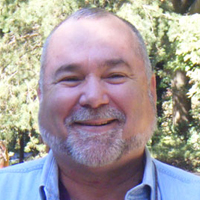
Click on Image for Personal Web Page
TIME has provided an utterly spectacular story on how the Obama team melded big data. As I finished the article, I could not help but wonder how much more useful the secret intelligence world would be, to so many more people, if it could do this for the rest of the world — with the $75 billion a year it spends — what the Obama team was able to do for a fraction of that price in the USA alone — as Stephen Cambone called for in 2000, neighborhood and household level granularity. This is what I told NSA in Las Vegas in 2002; this is what I put into a US Army monograph and a book in 2002. An Open Source Agency (OSA) as recommended by the 9/11 Commission, but under diplomatic or commercial auspices, remains the needed foundation for making intelligence (decision-support) not just relevant, but compellingly necessary to policy, acquisition, and operations.
In passing, this story helps us understand that Karl Rove did not do so badly — handicapped as he was by a party bent on self-destruction (or they would have nominated Ron Paul and an Independent or Libertarian Vice President) — the “nine ways” with “twelve amigos” came vastly closer than anyone had a right to expect.
Inside the Secret World of the Data Crunchers Who Helped Obama Win
TIME, 7 November 2012

In late spring, the backroom number crunchers who powered Barack Obama’s campaign to victory noticed that George Clooney had an almost gravitational tug on West Coast females ages 40 to 49. The women were far and away the single demographic group most likely to hand over cash, for a chance to dine in Hollywood with Clooney — and Obama.
So as they did with all the other data collected, stored and analyzed in the two-year drive for re-election, Obama’s top campaign aides decided to put this insight to use. They sought out an East Coast celebrity who had similar appeal among the same demographic, aiming to replicate the millions of dollars produced by the Clooney contest. “We were blessed with an overflowing menu of options, but we chose Sarah Jessica Parker,” explains a senior campaign adviser. And so the next Dinner with Barack contest was born: a chance to eat at Parker’s West Village brownstone.
. . . . . . . . .
How to Raise $1 Billion
For all the praise Obama’s team won in 2008 for its high-tech wizardry, its success masked a huge weakness: too many databases. Back then, volunteers making phone calls through the Obama website were working off lists that differed from the lists used by callers in the campaign office. Get-out-the-vote lists were never reconciled with fundraising lists. It was like the FBI and the CIA before 9/11: the two camps never shared data. “We analyzed very early that the problem in Democratic politics was you had databases all over the place,” said one of the officials. “None of them talked to each other.” So over the first 18 months, the campaign started over, creating a single massive system that could merge the information collected from pollsters, fundraisers, field workers and consumer databases as well as social-media and mobile contacts with the main Democratic voter files in the swing states.
The new megafile didn’t just tell the campaign how to find voters and get their attention; it also allowed the number crunchers to run tests predicting which types of people would be persuaded by certain kinds of appeals. Call lists in field offices, for instance, didn’t just list names and numbers; they also ranked names in order of their persuadability, with the campaign’s most important priorities first. About 75% of the determining factors were basics like age, sex, race, neighborhood and voting record. Consumer data about voters helped round out the picture. “We could [predict] people who were going to give online. We could model people who were going to give through mail. We could model volunteers,” said one of the senior advisers about the predictive profiles built by the data. “In the end, modeling became something way bigger for us in ’12 than in ’08 because it made our time more efficient.”
Read entire article (two screens).
Phi Beta Iota: With the twin suicide of the two major parties this year, and the emerging possibility that the Speaker might be discovering how the Automated Payment Transaction (APT) Tax would allow him to achieve the Holy Grail of deep Republicanism, the elimination of ALL income and other taxes while generating $4 trillion a year without borrowing, the way is open for decision support to come alive. Ethical evidence-based decision-making is the least expensive and most efficient means of achieving national security and national prosperity. Stories such as the above suggest that it is going to get harder and harder for the secret world to get by on being a pork barrel that produces “at best” 4% of what a major commander needs, and nothing for everybody else.
See Also:
2012 PREPRINT: The Craft of Intelligence [Full Text Online]
2010 Human Intelligence (HUMINT): All Humans, All Minds, All the Time
2010 Fixing the White House and National Intelligence
2009 Intelligence for the President–AND Everyone Else
2006 Forbes Blank Slate On Intelligence
2002 TIME Magazine The New Craft of Intelligence
2000 Presidential Intelligence (Book 1 Chapter 13)
Graphic: Ethical Evidence-Based Decisions



